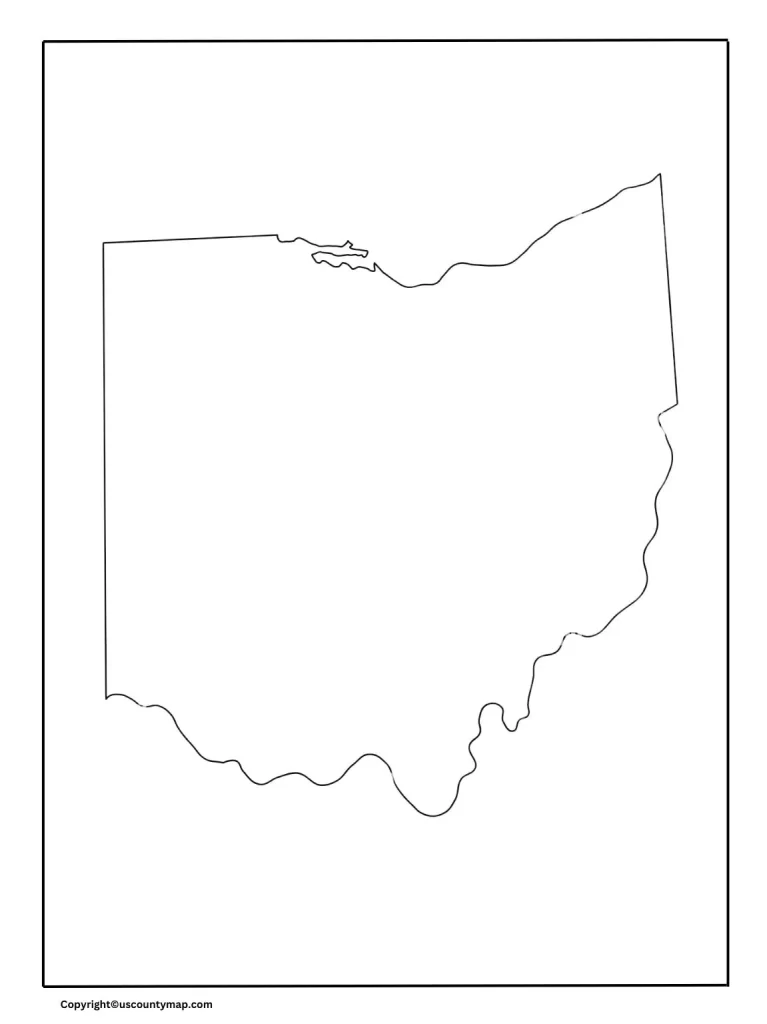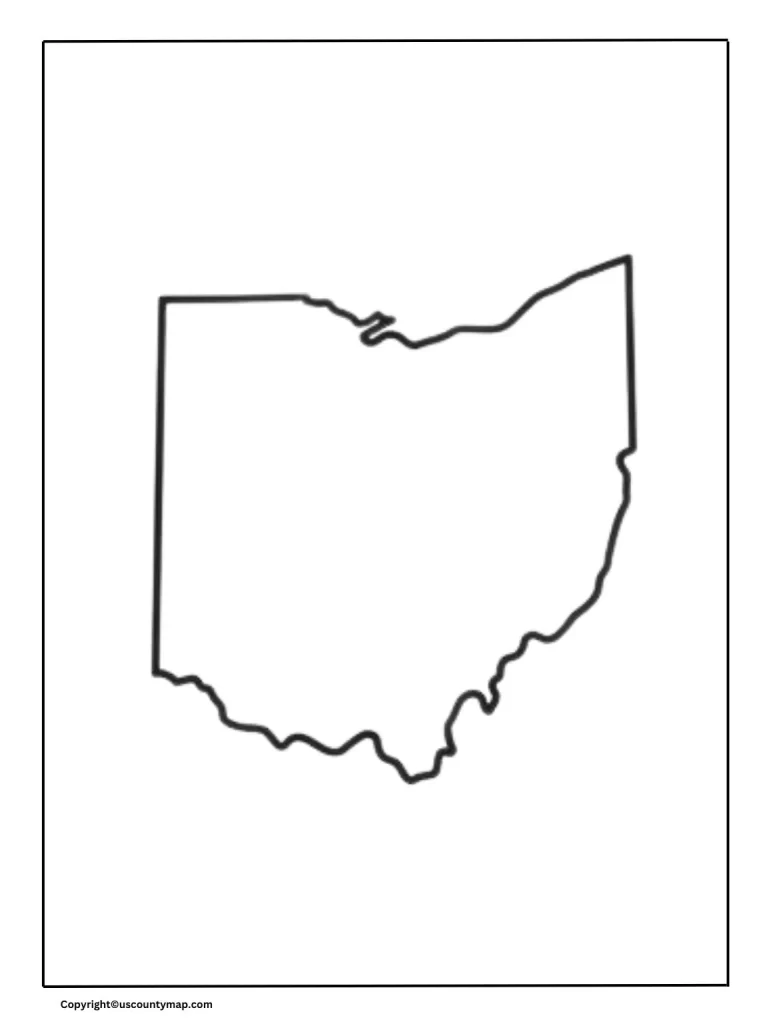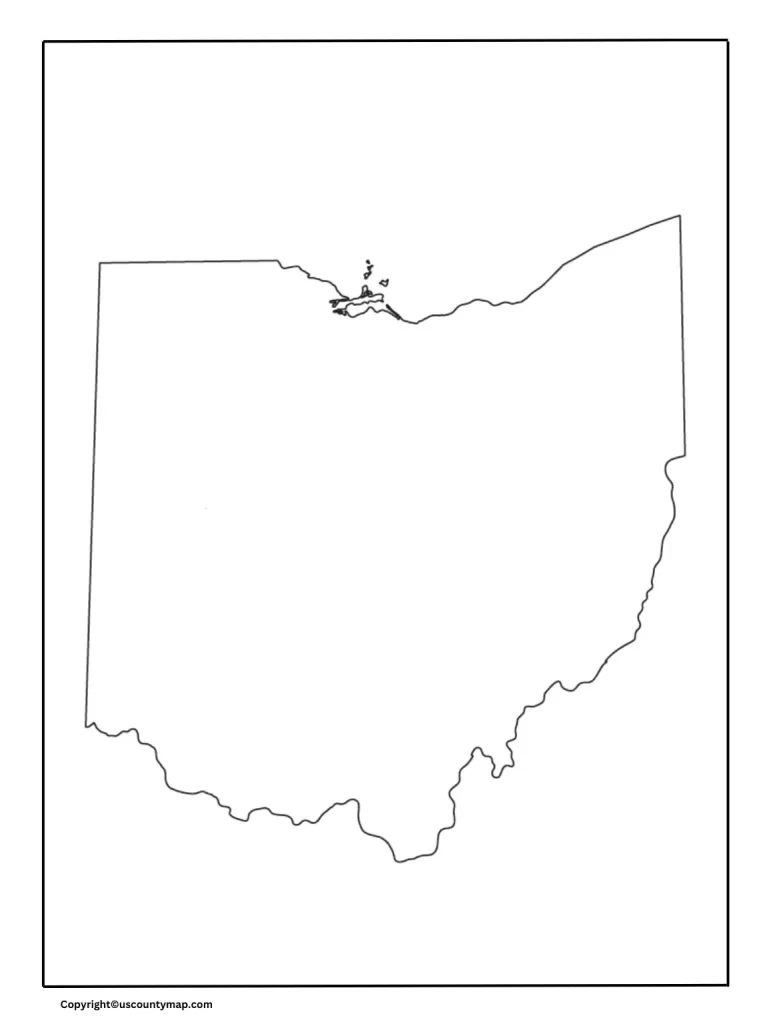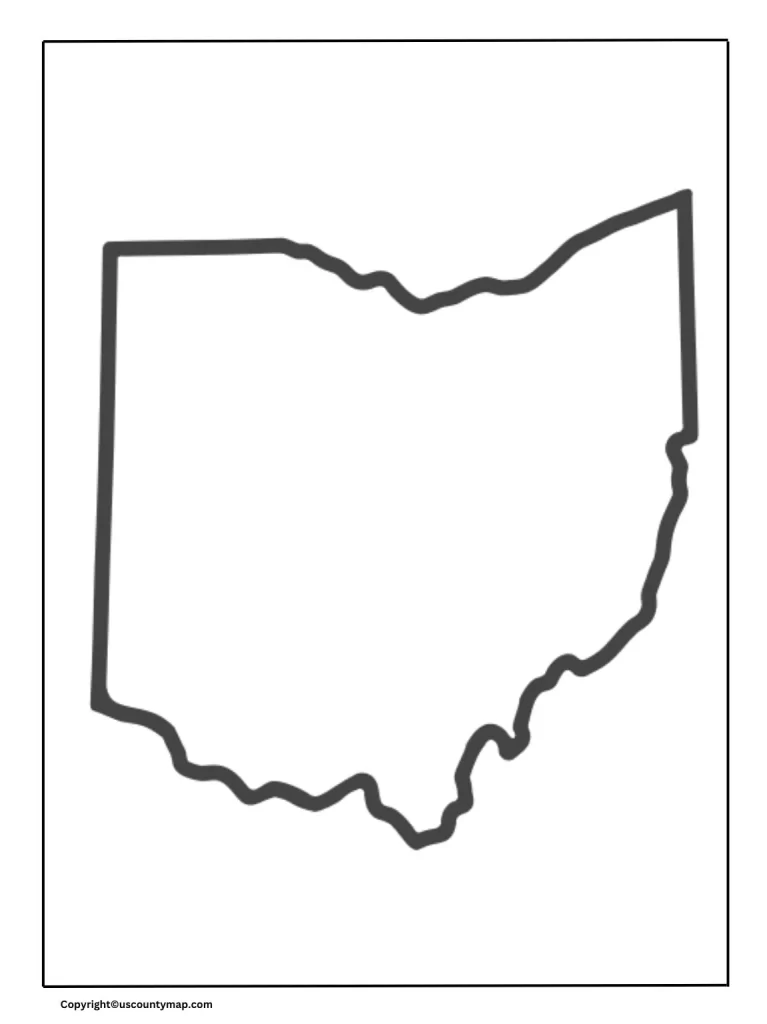An empty map of Ohio provides a clean and direct outline of the geographical boundaries of the state, devoid of additional details or labels. It has a rough rectangular shape of the state, which is surrounded by lake eri in the north, Pennsylvania in the east, Kentaki in the south -east, Kentaki in the south and Indiana in the west.
The empty map of Ohio underlines 88 counties of Ohio, which displays their individual size and sizes. This allows vacant canvas users to add custom information, such as labeling major cities such as Columbus, Cleveland and Cincinnati, marking important geographical characteristics, or highlighting specific areas for planning or educational purposes. The absence of pre -existing data on the map makes it a versatile tool to make it a versatile equipment to make it customized maps, do geographical analysis and allow users to fill the details according to their specific requirements.
Blank Map of Ohio Counties

Ohio is split into 88 counties, every with its very own particular geographic and administrative characteristics. Here’s an in depth description of Ohio’s counties as visible on a map:
Location and Size:
- Ohio is placed in the Midwestern area of the United States.
- The nation is kind of rectangular, and its counties range notably in length and form.
Major Counties:
- Cuyahoga County: Located within the northeastern part of the country, it includes the city of Cleveland, that is Ohio’s biggest metropolis. This county is a key financial and cultural hub.
- Franklin County: Situated in relevant Ohio, it encompasses Columbus, the country capital and the biggest town in Ohio.
- Hamilton County: Located in southwestern Ohio, it includes Cincinnati, a prime city known for its historic and cultural significance.
- Summit County: Also inside the northeastern part of the country, it consists of Akron and is known for its business records.
Geographic Features:
- Lake Eri Shoreline: Counties along the northern border, such as Kuyahoga and Loren, have access to the lake eri and have the facility of lashore landscape.
- Appalachian Plateau: South -East counties, such as Athens and Hawking, are characterized by mountainous terrain and rugged scenarios.
- Great Plains: Western part of Ohio, including counted, flatter, more open landscapes, including probal and dark, suitable for agriculture.
Regional Divisions:
- Northeast Ohio: Contains metropolitan areas such as Cleveland and Akron, and is characterized by its economic and cultural pursuits.
- Central Ohio: Comprises the capital city of Ohio, Columbus, and serves as a central focal point for government, education, and commerce.
- Southwest Ohio: Home to major urban areas such as Cincinnati and Dayton, and famous for its industrial and historical importance.
- Southeast Ohio: Characterized by rural and mountain landscapes, with emphasis placed on natural scenery and recreational opportunities.
- Northwest Ohio: Famous for agricultural lands and urban centers such as Toledo, situated close to Lake Erie.
Administrative Functions:
- Each county is charged with local government duties such as law enforcement, road maintenance and public services.
- The counties are further divided into townships and municipalities, which handle local governance and community services.
Transportation and Infrastructure:
- Major highways and interstate, such as I-71, I-75, and I-90, cross through various counties, facilitates connectivity across the state.
- Counties with important transport hubs include Cuyahoga (Cleveland Hopkins International Airport) and Franklin (John Glenn Columbus International Airport).
Printable Ohio Map
Cultural and Economic Significance:
- Each county has its own cultural, historical and economic profile. For example, Franklin and Hamilton Counties are large economic centers, while Appalachian counties can be focused on natural resources and external entertainment.
Blank Ohio Map Worksheet with Outline Map
A wide map of Ohio counties will reveal its boundaries, major cities, geographical features and regional divisions, which will give a clear picture of the state’s diverse landscape and administrative organization.



